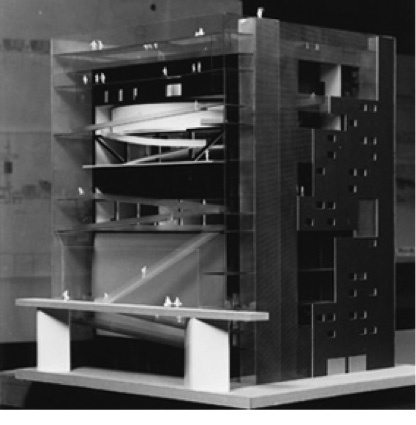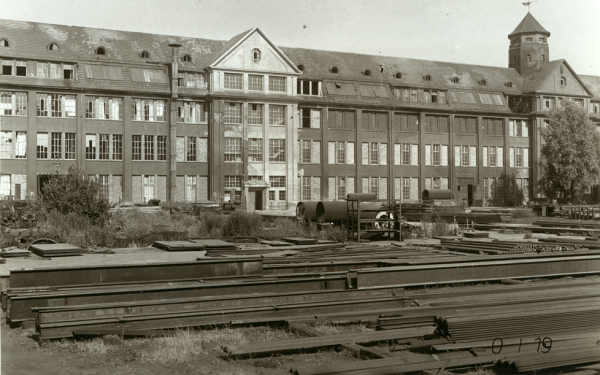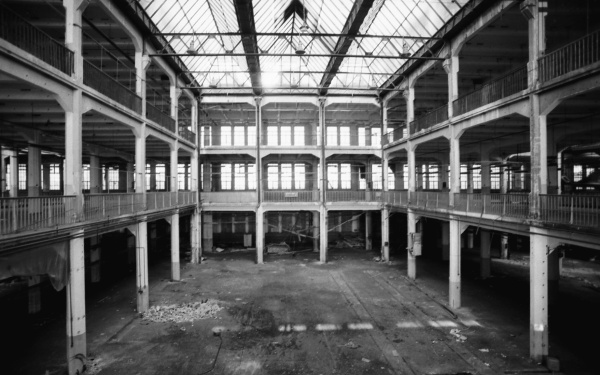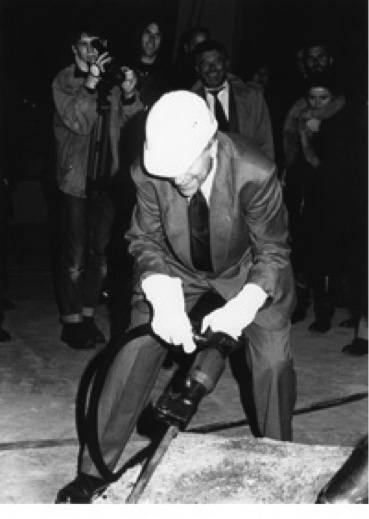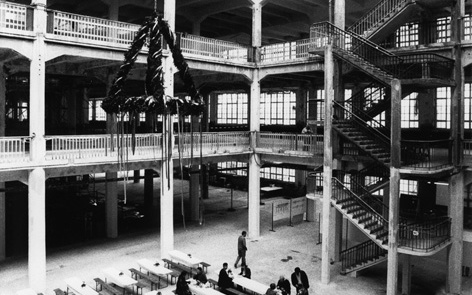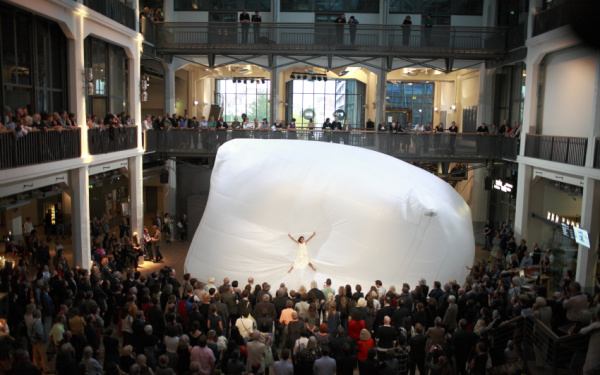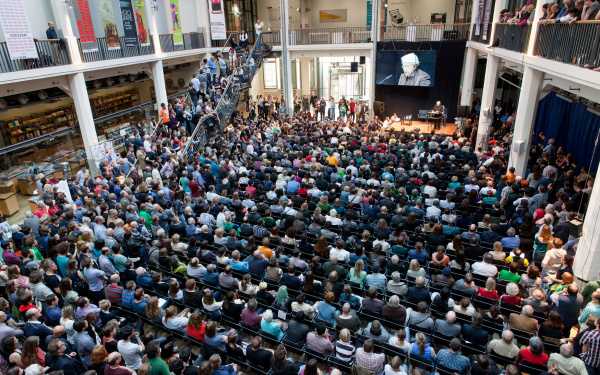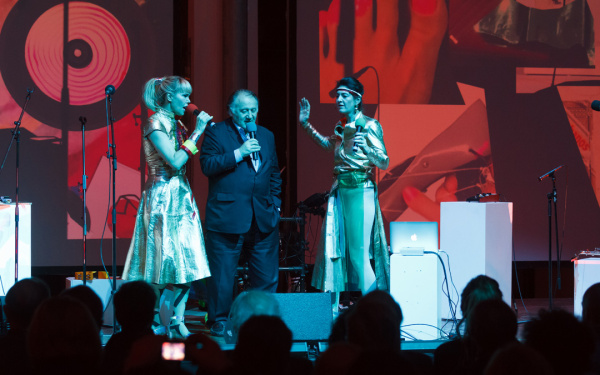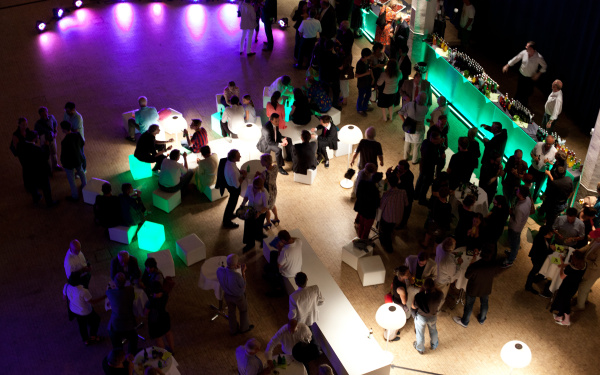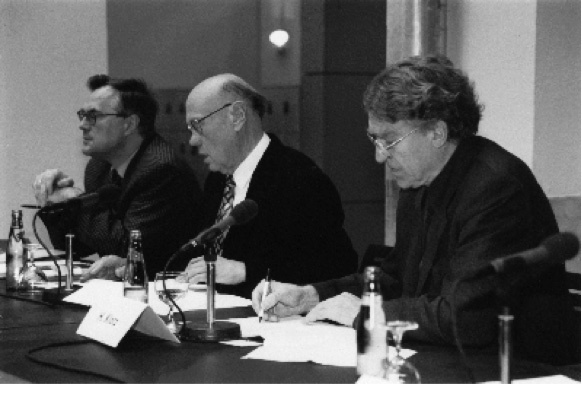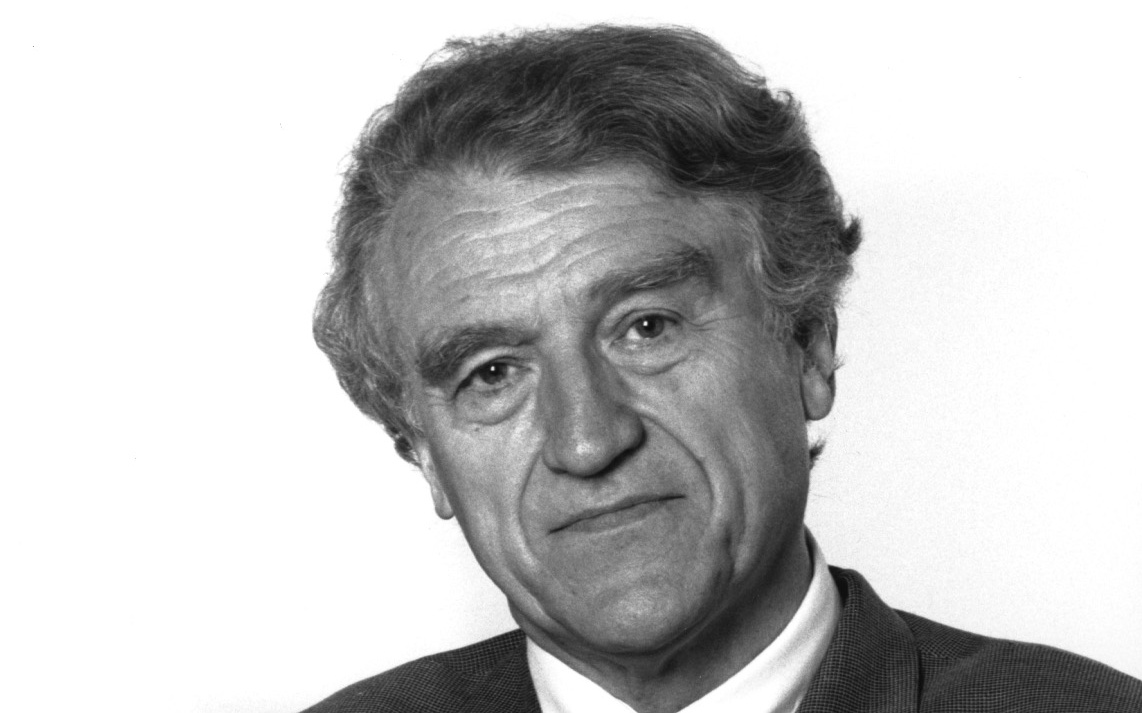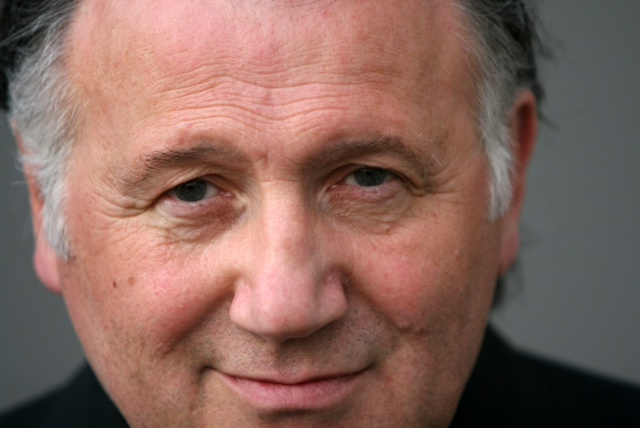Founding & History
The ZKM | Center for Art and Media was founded in 1989 by the city of Karlsruhe and the state of Baden-Württemberg as a public foundation. This unique cultural institute was called to life with the constitution of the board of trustees and the appointment of Professor Heinrich Klotz (1935–1999) as founding director.
The idea of founding an institution uniting artistic concepts with future-oriented technologies dates from an initiative by the city of Karlsruhe Department of Arts and Culture in 1984. In 1986, representatives of local politics, the university, the University of Music Karlsruhe, the nuclear research center, and various other institutions, along with representatives of the Karlsruhe art scene, formed »Projektgruppe ZKM.«
In February 1988, Projektgruppe ZKM concluded its planning on content and presented »Konzept '88«, a concept that outlined the merging of art and new media in theory and practice. This concept served as the basis for the working out the ZKM statutes, which came into effect on August 12, 1989. In addition, the Gesellschaft zur Förderung der Kunst und Medientechnologie e.V. [Incorporated Society for the Development of Art and Media], was founded in 1988, and has remained a dedicated supporter of the ZKM ever since.
Construction of a future-oriented new building was planned to accommodate the »electronic Bauhaus« (Jürgen Claus), which would be home to a museum, a (media art) collection, research institute, studios, as well as a media theater. An international architecture competition was announced for this, and for the new design of the grounds located to the south of the Karlsruhe main station. Rem Koolhaas from The Netherlands won the competition with the submission of a visionary design that foresaw a 60-meter-high »cube« with a media façade, which also referred to the city’s Baroque urban planning. After a period of long and involved debate, the realization of this ambitious project fell through due to financial reasons. In 1992, the city ultimately abandoned the plans, and consequently Koolhaas’ design for a new building.
An Industrial Monument as alternative Location
Erected between 1915 and 1918 by architect Phillip Jacob Manz as a weapons and munitions factory, the historical hall construction of the former industrial plant owned by Industriewerke Karlsruhe-Augsburg (IWKA), presented itself as an interesting alternative location. The donors decided in favor of restructuring this masterpiece of industrial architecture. The architectural office Schweger + Partner designed and implemented the reconstruction, which remains functional and aesthetically attractive until today. The symbolic groundbreaking ceremony took place in 1993, followed by the roofing ceremony in 1995.
Productive Transitional Phase, 1987 to 1997
Until the move in 1997, the ZKM offices, the studios of the Institute for Visual Media and the Institute for Music and Acoustics were dispersed at different locations throughout the city of Karlsruhe. In order to offer an interested public insights into the artistic and scientific productions of the ZKM from the outset, the foundation presented itself by way of various events at alternating locations throughout the city. The series of events »ZKM in the Factory« of the biannual media art festival »MultiMediale«, as well as awards ceremonies for outstanding examples of media art and theory – such as the »Siemens Medienkunstpreis« [Siemens Media Art Prize] and the »Internationale Videokunstpreis« [International Video Art Prize] – stirred public interest. In the ten years since its founding, the ZKM had already published numerous books and CD editions, which are all considered pioneering electronic publications.
Official Opening 1997
On October 18, 1997, as part of a grand ceremony, the ZKM opened the doors of the restored »Hallenbau«, and presented its institutes, departments and extensive exhibition, concert, and event spaces to the public: the Media Museum and the Museum of Contemporary Art as well as the Institute for Visual Media, the Institute for Music and Acoustics, the Media Library, the Media Theater and the »Blue Cube«. The »MultiMediale5« was presented itself as the opening exhibition of the Media Museum. At the same time, the Städtische Galerie Karlsruhe [Municipal Gallery] also moved into the art complex.
1997 to 2023
In a second phase of construction, the spaces of the University of Art and Design Karlsruhe (HfG), founded in 1992 by Heinrich Klotz, and the Museum of Contemporary Art belonging to the ZKM, were completed.
On December 4, 1999 the Museum of Contemporary Art was opened, in which both the Museum of Contemporary Art as well as the ZKM Collection were housed. In addition, the collaboration with prominent private collections from the state of Baden-Württemberg was established following which the Museum as well as the Collector’s Museum opened to the public.
Following the death of founding father Heinrich Klotz, Peter Weibel was appointed CEO and Director of the ZKM in 1999, which he directed until 2023.
Since GLOBALE 2015/2016, the ZKM no longer distinguishes between the Media Museum and the Museum of Contemporary Art. It became clear that the establishment of a large exhibition platform without subdivision reflected the zeitgeist, because media and media art have become a matter of course in contemporary art, no longer requiring a spatial separation. Rather, the media focus thematically extends across all ZKm exhibitions, which is why it was decided to speak of ZKM exhibitions in general and to break through the previous thinking in silo structures.
To meet the requirements of the digital society, the ZKM founded the Hertz-Lab in 2017. Its agile structure promotes research and production and continues the activities of the Institutes for Visual Media and Music and Acoustics in an expanded form.
In March 2023, Peter Weibel passed away in Karlsruhe shortly before his retirement.
Since 2023
On April 1, after more than 24 years, the scientific-artistic direction of the ZKM | Karlsruhe changed. The media artist and theorist Peter Weibel is succeeded by the Briton Alistair Hudson. With his concept of the »useful museum,« Alistair Hudson understands art and cultural institutions as places for social responsibility and change, and defines artistic and curatorial practice as social practice.

